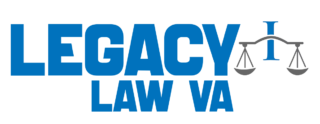When you are injured in an accident caused by someone else’s negligence, you have a valid personal injury claim. To receive compensation for your injuries and other losses, you must be able to prove that the other party was liable or legally responsible. Proving liability is a key part of any personal injury case.
In personal injury law, liability involves showing that the defendant’s negligent actions directly caused your injuries.
- Duty of Care – Your duty of care was owed by the defendant. For example, drivers must drive safely and avoid causing collisions.
- Breach of Duty – Defendant breached their duty of care through negligence. Speeding, ignoring traffic signals, and distracted driving are examples of breaching a duty of care.
- Causation – The defendant’s breach directly caused your injuries. There must be a clear link between their negligent behavior and the damages you suffered.
- Damages – You suffered measurable losses and damages in the accident.in the accident. It includes medical bills, lost income, pain and suffering, and more.
Proving all four of these liability components is critical for recovering full compensation. An experienced Orange County Personal Injury Lawyer knows how to establish adequate evidence for each part of your claim.
Using evidence to demonstrate liability
Proving liability relies heavily on evidence. Your attorney uses a variety of evidence sources to build a compelling case, such as:
- Police reports detailing the accident circumstances and citing contributing factors, such as drunk driving.
- Photographs and video footage taken at the accident scene showing skid marks, property damage, and other relevant details.
- Medical records documenting your injuries, diagnoses, treatments, and prognosis. These help prove damages.
- Expert testimony from professionals like accident reconstruction specialists who analyze the evidence and speak to liability factors.
- Witness statements from anyone who saw the accident take place or observed either party’s conduct beforehand. Eyewitness accounts help establish key facts.
- Records related to product defects, poor road design/maintenance, or other conditions that have contributed to the accident and injuries.
Presenting credible evidence like this makes the liability argument more convincing. Investigating the accident thoroughly and working with experts uncover the best evidence for your case.
Proving specific types of negligence
While general negligence covers many accident scenarios, some cases involve more complex negligence claims.
- Premises Liability – You have a valid claim if you slipped and fell due to unsafe conditions on someone else’s property. Examples include wet floors, cluttered walkways, poor lighting, and failure to warn of hazards. Evidence like photographs and maintenance records help demonstrate the property owner knew about (or should have known about) the risks.
- Product Liability – If you suffered injuries from a defective product, the manufacturer is liable. Documenting design flaws, improper labeling, or failure to include safety warnings is key. hire a personal injury lawyer gets records related to the product’s design, testing, and safety reports.
- Medical Malpractice – Holding a doctor or healthcare provider liable for medical negligence requires showing they breached the standard of care. Your attorney uses medical records and expert testimony to demonstrate substandard treatment.
The evidence must establish that the defendant had a duty, breached their duty, directly caused your damages and that you suffered measurable losses.

